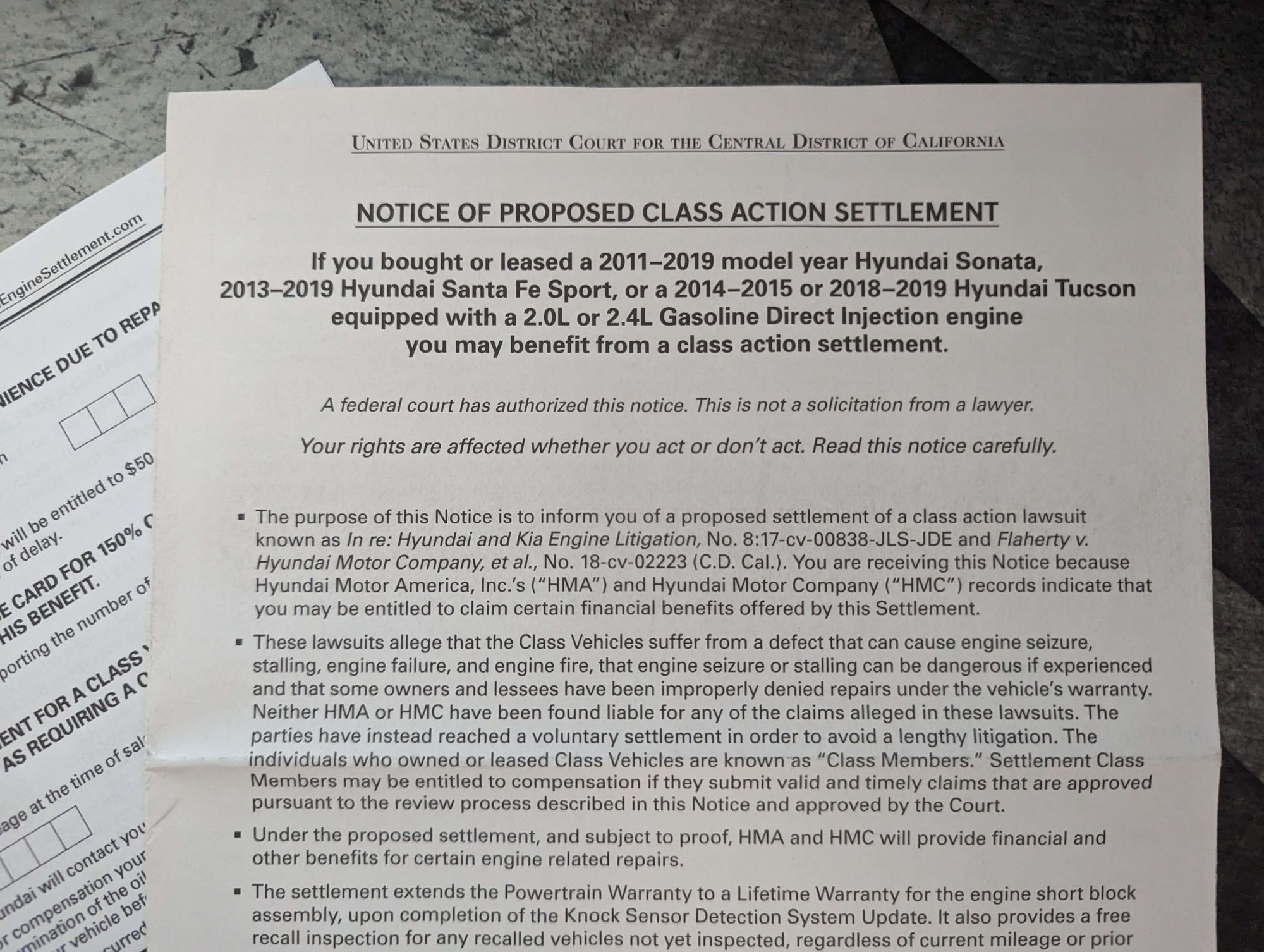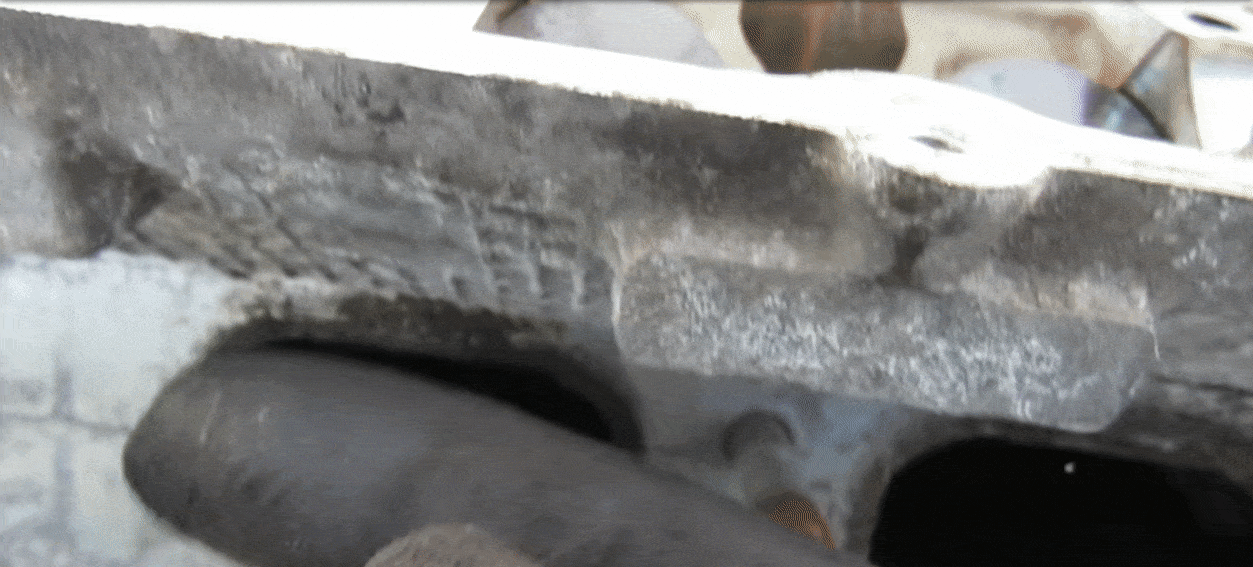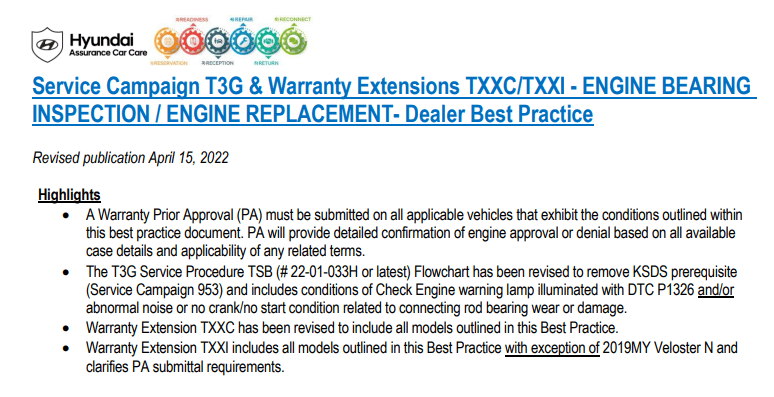Hyundai Theta II Engine

A few days ago my 2019 Hyundai Sonata abruptly stalled/seized in the middle of the road while driving. This has never happened to me while driving before and it was quite an experience. I had within seconds:
- My brakes acting extremely odd - they wouldn't really work unless hammered down.
- My power steering was gone.
- I had 4 new red icons on my dashboard illuminated.
- My gas pedal was unresponsive.
- My vehicle wouldn't move forward.
I was completely unaware how panic inducing it can be when your brakes don't work as you expect. I guess I was unaware of how much hydraulic pressure is used to make the brake pedal work with little effort. I was mashing the brake pedal and was sure I was going to ram the car in front of me. Thankfully just pumping the brakes and slamming my foot down led to me stopping.
About an hour later a tow truck showed up and my Hyundai was off to the dealership. With how backed up the dealership was they would be unable to look at my car for days.
I tossed this news to a group chat and my friends just posted a link towards a class action lawsuit and mocked me for having a Hyundai. I did vaguely remember getting a letter in the mail about that mentioned lawsuit.

Back when I got this letter, it seemed the points didn't really apply to me. It was for requesting reimbursements for one of the following:
- An engine failure
- Delays exceeding 60 days
- An engine fire
- Losing faith in Hyundai
So after reading those - I've only had 2 Hyundai's in my life and combined they've gotten me through 15 years so I hadn't lost hope and I hadn't noticed an issue at all. So next time I was at my service appointment I mentioned this and was told I'll get needed software patches applied during service so I ignored this.
After posting this life update to an Ingress group chat - I learned a teammate in this game happened to be previously employed as a Hyundai technician for a dealership. I messaged this individual and asked if I could jump on a call with him and he agreed.
We talked for about 20 minutes and I asked for permission without using his name or location to summarize what we discussed. He agreed, so thus this is my recap.
He started this call asking me if I had the dreaded P1326 code and I responded I have no idea what that is. I got a mini lesson then about the fault codes and how that referred to an alarm about potential engine knocking.
Error code P1326 occurs due to vibrations indicating excessive connecting rod bearing wear. You can easily detect them using the KSDS (Knock Sensor Detection System). Since severe engine damage and failure are possible.
Once again I asked what any of that meant and this guy asked how much time I had and proceeded to give me ~10 years of history with him and Hyundai while working in the dealership.
I also learned that I know an embarrassing-little amount about cars under the hood, so I listened well and did some research to augment our discussion.
2011
Hyundai launches a Theta II engine which he mentioned adjusted the engine design from a multi-port fuel injector to a direct injector for squeezing further optimizations and efficiencies out of the engine. This is where he mentioned that the first flaw they noticed in cars as they came in was a massive build up of carbon in the intake valves as there was no longer fuel to clean it out.

So one quick search and I found a YouTube video to visually see what he was describing.
2012 - 2014
This individual's dealership starts noticing a pattern of engine failures in a variety of Hyundai's - they just don't know why. They dealt with many engines where the rod would displace itself and lead to catastrophic failure either shooting down through the bottom oil pan or up. This was way before any official recall or support from Hyundai, but the dealership knew something was off.
2015

As 2015 nearly ended he mentioned Hyundai started Campaign 132 which was specifically for an isolated set of engines and cars. He mentioned what this required them to do was sit in the car with all windows up and hold some tablet in the vehicle.
They'd run the RPM up and idle it while this tablet was recording the audio and listening for audio of the engine potentially "knocking". This individual hated this test as it was only testing the engine at that very moment, which meant that it would rarely fail a vehicle preemptively. He remembered some cars that passed this test would come back sometimes just weeks to months later with a seized engine.
2017

This is when he remembered that another campaign started with Hyundai named Campaign 162, which added a bunch more of newer vehicles and provided a new method for recording the engine. Now this was a customized microphone that went into the engine dip stick for a more accurate recording.
However, much like you expect. This only in his experience detected vehicles that had already seized or were moments from it. Since he remembered a few circumstances where vehicles came back not more than a week later with a blown engine.
Around this time he remembered more and more occurrences of not only a seized engine, but the ejection of the rod towards the exhaust could cause the engine to catch fire. This meant the government was getting quite involved at this point and pushing Hyundai to make changes.
For him - they just kept recording audio of failed engines to get approval from Hyundai for a replacement. They'd make some money, but he mentioned it was getting pretty ugly for the dealership since occasionally during tests the rod might eject and start a fire in the shop.
He believes this is why Hyundai ended the 162 & 132 campaigns as they required a good deal of testing the engine which was causing fires in the dealership's shop.
2018
This is where he learned that Hyundai was under major fire. They had to either recall millions of vehicles or give a warning to consumers that their vehicle was in danger of blowing up.

So Hyundai had a new campaign for them known as Campaign 953 which was the software upgrade that introduced the Knock Sensor Detection System (KSDS). Not only that but it added basically any Hyundai vehicle with the Theta II engine to the list.
He said this was internally known as the "Limp mode" campaign and associated code. When it was thrown your vehicle would shut itself down into a limited mode so its only goal was to safely transport it back to the dealership at a low speed.
He said this was a nightmare campaign. So many vehicles came in with this code (P1326) which was the code responsible from the KSDS system. Hyundai was telling them to order new engines and just put people in loaners, but the engines were on a 6+ month backorder and they were out of loaner cars. They couldn't get answers from Hyundai on what to do with vehicles that threw the code, but had no issue.

So the dealership was stressed in the situation, despite making some solid money from all the coverage from Hyundai. Except he mentioned something happened when Hyundai requested they cancel all pending orders for new engines and instead follow this new campaign known as Campaign T3G.
This was a campaign to help fix/teach the dealership how to detect a false positive fault code when it came to the KSDS system. It turned out some vehicles he said had the knock detection line resting on top of the fuel injector wire. This would lead to interference which would improperly trigger the knock detector sensor.
So the staff was trained to remove the existing KSDS system and rewire in an alternative way that avoided existing wires. This was an expensive amount of labor to do and Hyundai quickly was not happy with the amount of hours they had to pay for.
So they revised the T3G again and again cutting hours paid until a new piece of hardware was invented to more accurately detect affected engines with little labor and no chance of fires in the shop. He mentioned it was a sketchy little box that was known as the: Engine Bearing Clearance Tester.
You'd connect this piece to the engine and use a special crankshaft rotator tool to test the engine. It would then measure highly accurately over many tests the rod bearing clearance to detect a flaw, but still suffered in the same regard as the last tests - it would only detect an issue if the damage had started.
2019
He mentioned this is where Hyundai solidified their stance that would only warranty engine replacements when it was rod bearing failure. He knew that in plenty of situations burning oil was a sign of this issue, but it wasn't covered. This led to extremely pissed consumers he said and they considered warranty fraud, because burning oil would soon become rod bearing failure which then was covered.
This was a year that made it clear to the dealership that Hyundai was getting upset with so many warranties. They continued to adjust the criteria for what would be covered and this put the dealership in a battle to fight for the consumer at times when they knew the engine damage wasn't operator error.
After all this interesting background - I was quite furious in this company Hyundai I've been supporting since my first car.
So now I learned I don't want to go anywhere near another Theta II engine again. I might have to sell my fixed Hyundai when I get it back and do some research for a new manufacturer.
UPDATE (2024) - My Hyundai was sold back to the dealership after seizing for the 3rd time.
